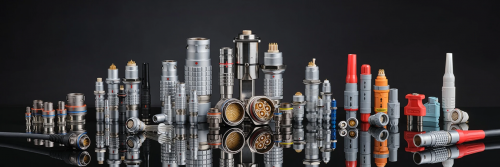The number of mating times of a connector, that is, the number of times a connector can be connected and disconnected while meeting all specifications, is an important indicator for evaluating its service life. The number of mating times can help users estimate the durability and reliability of the connector in a specific application, thereby guiding the design and maintenance of the equipment.

Case
Take USB connectors as an example. Their design usually allows thousands of matings over a relatively long usage cycle. This is because USB connectors are frequently plugged and unplugged in daily use, so their design needs to take high-frequency use into account. In contrast, the design of FFC (flexible flat cable)/FPC (flexible printed circuit) connectors is more targeted at low-frequency connection needs. FFC/FPC connectors usually only support dozens of matings because these connectors are mainly used in some consumer electronic products that do not require frequent plugging and unplugging.
Impact on the number of mating
The number of times a connector can be mated is affected by several factors, the most important of which include the material used for the contacts, the type of plating, and the thickness of the plating. Connector pins made of tin-plated copper alloys are generally cheaper, but their durability is relatively low, usually only supporting 10-15 mating cycles. In contrast, connectors made of higher-quality materials such as beryllium copper or phosphor bronze, if plated with a thicker layer of gold, can have a mating life of up to 500-1000 times. This is because high-quality materials and thick plating can effectively reduce wear and oxidation, thereby extending service life.
In addition, the number of times a connector is mated is directly related to its resistance value. Connectors with lower resistance values usually have poor contact after fewer plugging and unplugging times, while connectors with higher resistance values can withstand more plugging and unplugging operations. The resistance value directly affects the performance and durability of the connector, so when designing a connector, it is necessary to carefully select the appropriate materials and processes to optimize its resistance value and mating life.
It is worth noting that plug and receptacle connectors consider different factors in the evaluation of mating times. For plug connectors, the number of mating times depends mainly on the quality of the contact and plating materials. High-quality materials and plating can improve the durability of plug connectors. However, in receptacle connectors, in addition to material quality, the ability to maintain mating pressure also needs to be considered. Greater contact pressure can provide more stable contact, thereby extending the service life of the connector.
Summary
In short, the number of times a connector is mated is an important indicator for evaluating its quality and reliability. During design, factors such as material selection, plating process, and mating pressure need to be considered comprehensively to ensure that the connector can work stably and efficiently in the intended application.
KONNRA connectors have a good reputation in the industry and have obtained multiple certifications such as ISO9001, ISO14001, ISO13485, IPC620, IATF16949, UL, etc., ensuring strict standards for product quality and environmental protection. With these certifications, KONNRA continuously optimizes the production process to improve product reliability and stability, and strives to provide customers with high-quality services and solutions.










